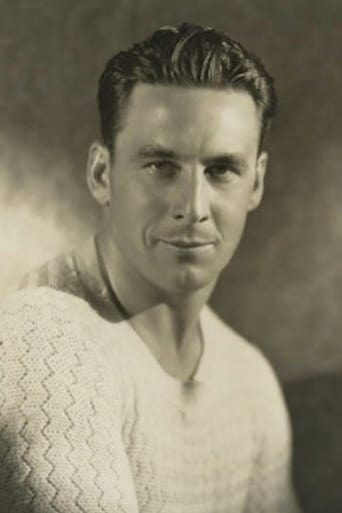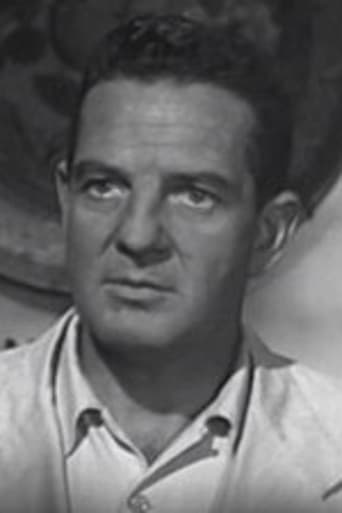Cubussoli
Very very predictable, including the post credit scene !!!
Lumsdal
Good , But It Is Overrated By Some
Portia Hilton
Blistering performances.
Zlatica
One of the worst ways to make a cult movie is to set out to make a cult movie.
MartinHafer
While there are a few small signs that this film might have been directed by the great John Ford, for the most part there is little about this B-movie that would seem great or inspired. Now I do cut the film SOME slack since it's an early talkie, but compared to the average film of the day, it's still a sub-par film.Most of the problem is the story--it's just written so poorly and the characters are just so gosh-darn stupid that it's hard to enjoy. You KNOW this ain't the brightest ship in the US Navy when BOTH Warren Hymer AND Nat Pendleton serve on it--to actors who specialized in playing thick-headed galoots. In fact, the rest of the crew is amazingly stupid as well--making me feel that the writers sure didn't try very hard for realism. The story is about an old fashion wooden sailing ship that appears to be a merchant ship but really hides a deck gun designed to sink German subs during the waning months of WWI. But the American crew, as I said above, is dumber than a sack of door knobs and I got frustrated at the writing. A great example is when the Captain told them all they were on a top secret mission, so when they go on shore leave, no fraternizing and no liquor--at which point they all went out chasing women and getting drunk. What part of "top secret mission" or "no fraternizing or drinking" didn't they understand?! Then, when tops of German-accented sailors started walking about, no one seemed to even notice!! The writing was strictly B-movie (or worse) and there were so many loose plot threads that I had a hard time watching the film. The only positive thing I noticed about the film is the nice cinematography. Otherwise...yuck.My advice is that if you MUST see it because you are a die-hard Ford fan, then do so by all means. Otherwise, you'd be best to find another--ANY other Ford film.
Shawn McKenna
In the oeuvre of John Ford his late silents are ahead of his early talkies in artistic aesthetics because of two important factors: actors and dialogue. While he is most known for his sagacious later period films like The Searchers or The Quiet Man (and many others) he has several excellent 20s films like 3 Bad Men and Four Sons (I still have not seen Iron Horse which I will have to rectify soon). Those silents work quite well on a visual level and have a surprising amount of movement sometimes analogous to a Murnau film. When sound became prominent many producers felt forced to exploit this aspect which slowed down movement, placed people in specific positions due to microphones and forced the focus to be more on verbal acting ability. The latter was the rub in Ford's early talkies.The biggest strength of this film is the look and feel of the settings and several nice shots of the camera. One of the biggest surprises is that most of this film is shot on location. There are beautiful shots on ships, on the sea and even some quick underwater shots (the earliest in a film I can think of) which show a submarine breaking the surface of the sea. John had the American naval at his disposal and it really showed. Given there is a possible anachronism of some of the equipment since this movie was supposed to take place during WWI.Then there is the rub. The sound is typical of early 30s with very little music, stifled acting with hammy delivery and a general slow plot.During WWI, a navel command is sending out a three-masted schooner in Spanish waters as a decoy (with a big hidden gun) to lure a famous U-Boat out of the water so it can possibly be torpedoed by a hidden American sub. When the navy personnel go ashore as merchants the captain falls in love with a double agent, while another personnel gets Mickeyed (sleeping potion) and left behind when the personnel cannot find him. The plot is mostly straightforward and the ending is obvious though still exciting. The Germans are treated (like in Grand Illusion) as humans so I do not think this played much in the 1940s.An interesting movie that will be fun for people who enjoy 1930s films as long as they can handle some of the flaws of plot and acting. John Ford's use of camera is quite evident but does not quite handle the plot and characters as well as in his later films.This movie can be found in the huge Fox at Ford box set.
Michael_Elliott
Seas Beneath (1931) ** (out of 4) A U.S. "mystery ship" is sent out to destroy a German U-boat, which has been causing damage to Allied ships. Like many other early sound films, this one here suffers from non-stop talking, which is damaged because the dialogue is just downright stupid and bad. I guess studios would read screenplays and order additional dialogue because this film has so many subplots that I can't help but think they were added to boost up the dialogue. There's a love story between George O'Brien and Marion Lessing, which is just downright stupid and bad. I'm going to guess the relationship between the boat Commander and a possible German spy was meant to add suspense but it never does. Ford really seems bored with these various dialogue scenes because there's never an ounce of energy in them. What really works is the final twenty-minutes when the mystery ship goes up against the U-boat. There's a long sequence where the ship must fall under attack because the sub isn't in their range for a counter attack. This scene here is full of wonderful excitement and some real suspense. The action scenes are all very realistic and Ford really puts the viewer in a mind frame where it feels like you're actually on the ship. Outside of these scenes I'd have to say Ford's direction is pretty weak because it really seems like he's making a silent movie with dialogue. The scenes are really strange to look at and they never really feel like a director use to the sound technology.
rfkeser
John Ford's early talkie is not completely satisfying as drama, due to inadequate acting from the juvenile lead and the leading lady, but it is fairly adventurous film-making: much of it is staged on a real boat which is really at sea. This causes problems for the sound recording and the lighting, but gives it an exhilirating, seat-of-the-pants quality. The high point is a surprisingly intense tango sequence in a Canary Islands cantina, almost as memorable as Rita Hayworth and Anthony Quinn's tango in BLOOD AND SAND. All the action sequences are enjoyably handled and George O'Brien agreeably plays the suave captain as a take-charge guy.





